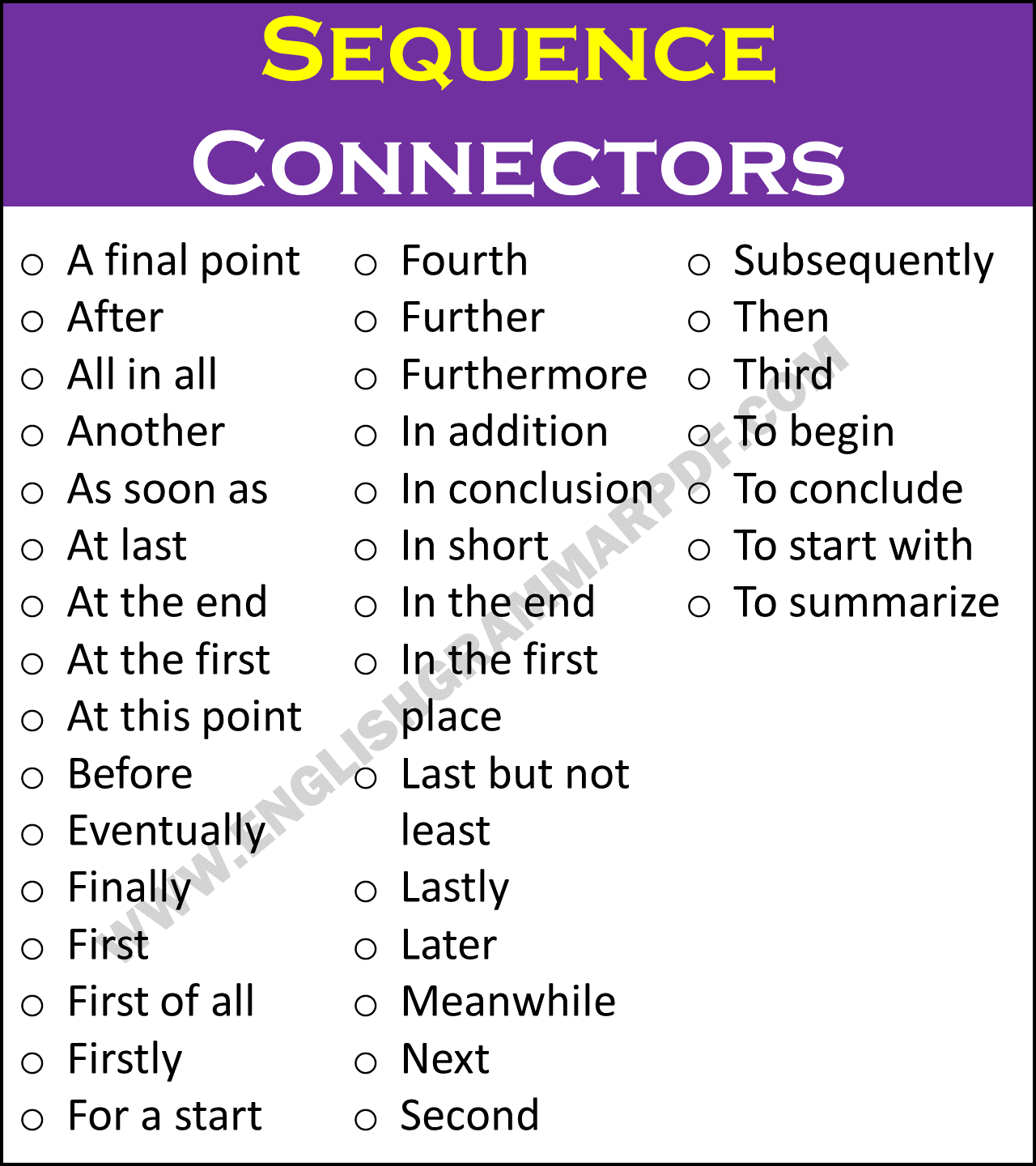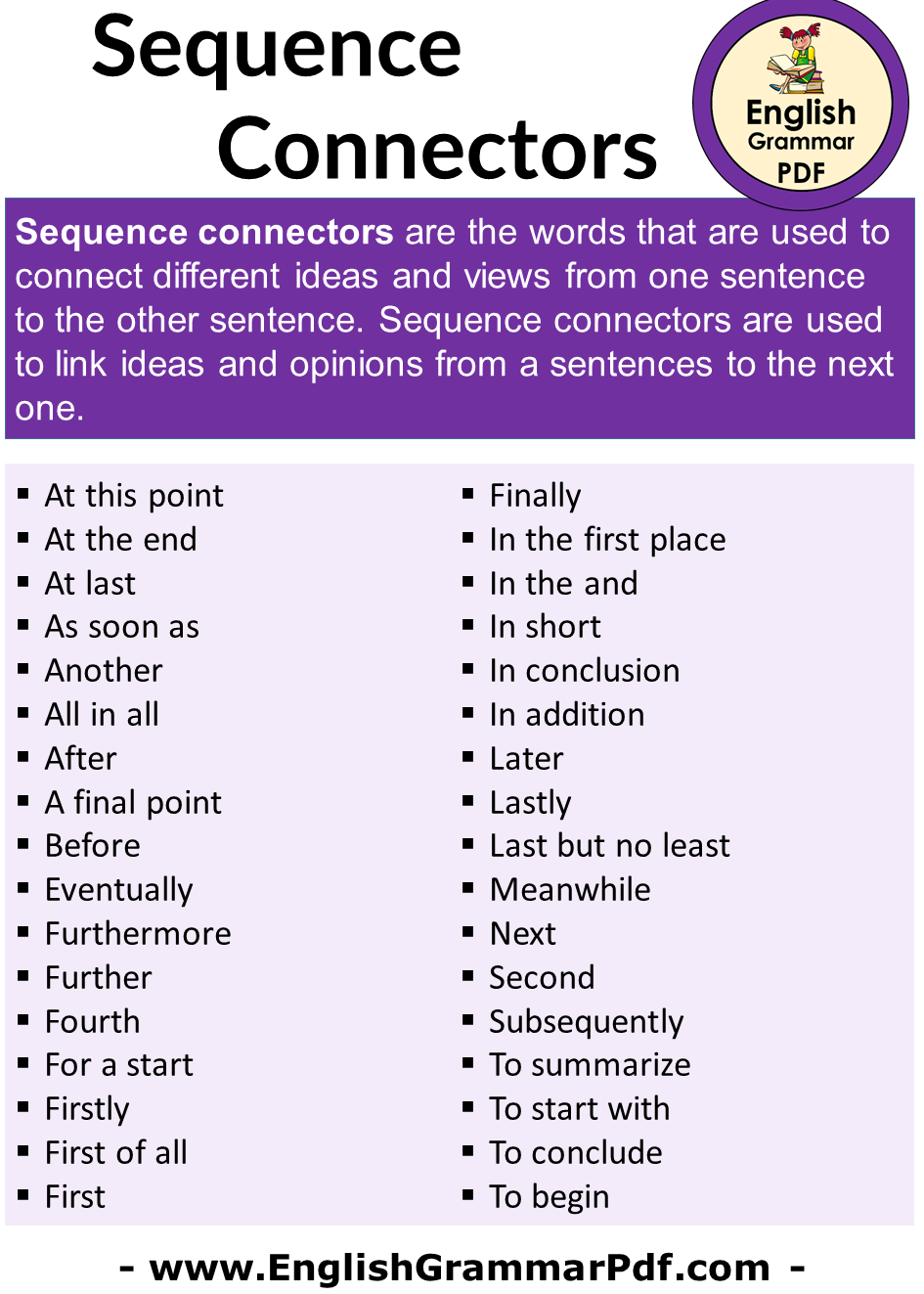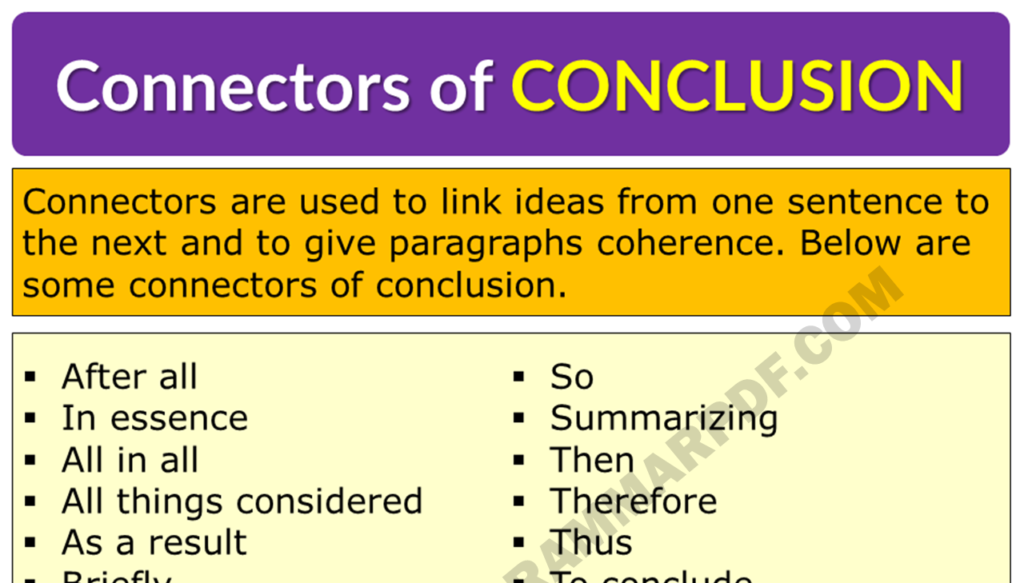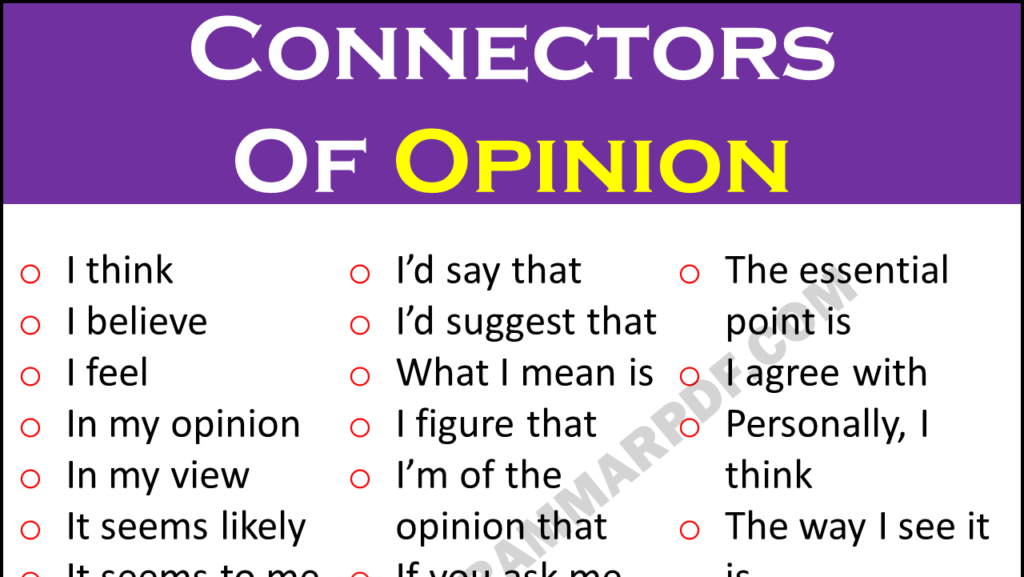Ever struggled to seamlessly link your thoughts in writing? Our latest blog post, ‘Sequence Connectors List with Examples‘, is a game-changer for writers and communicators alike. Dive in to discover a comprehensive list of sequence connectors, complete with practical examples, and elevate your writing instantly. Plus, get your hands on a downloadable PDF guide!
Also Read: Connectors and Example Sentences
What is a Sequence Connector?
Sequence connectors are linguistic tools used to link ideas, sentences, or paragraphs in a logical and coherent order. They help in clearly indicating the sequence of events or steps in a process, ensuring smooth transitions and clarity in communication. Common examples include words and phrases like “firstly,” “then,” “next,” and “finally.”
Sequence Connectors List with Examples
Here is the list of sequence connectors:
1:- Firstly: Indicates the beginning of a series or list.
Example: Firstly, we need to gather all the necessary materials.
2:- Secondly: Follows ‘firstly’ to introduce the next point.
Example: Secondly, we will discuss the project timeline.
3:- Thirdly: Continues a sequence after ‘secondly’.
Example: Thirdly, the budget allocation will be reviewed.
4:- Next: Indicates a subsequent step or idea.
Example: Next, we will proceed to the testing phase.
5:- Then: Shows progression in time or logic.
Example: We gathered data, then analyzed it.
6:- After that: Refers to an action following another.
Example: After that, we can evaluate the results.
7:- Subsequently: Indicates something following something else in time.
Example: Subsequently, the team presented their findings.
8:- Later: Refers to an action occurring after a point in time.
Example: Later, we will discuss the implementation process.
9:- Meanwhile: Indicates something happening at the same time as another activity.
Example: Meanwhile, the other team will start their research.
10:- Simultaneously: Happening at the same time.
Example: Simultaneously, various tests were conducted.
11:- Previously: Refers to something that happened before.
Example: Previously, we had focused on a different market.
12:- Following this/that: Indicates a subsequent action or point.
Example: Following this, we’ll need a feedback session.
13:- Thereafter: Happening after a certain point or event.
Example: Thereafter, the project entered its final stage.
14:- Before: Indicates an action happening prior to another.
Example: Before we conclude, let’s review the main points.
15:- Finally: Indicates the last point or step.
Example: Finally, we will launch the product.
16:- Ultimately: Refers to the final outcome or conclusion.
Example: Ultimately, our goal is to improve efficiency.
17:- Lastly: Similar to ‘finally’, but often used to introduce the final point in a list.
Example: Lastly, I’d like to thank everyone for their hard work.
18:- Consequently: Indicates a result or effect.
Example: Consequently, sales increased by 20%.
19:- As a result: Similar to ‘consequently’, showing the outcome of something.
Example: As a result, we decided to change our strategy.
20:- Therefore: Used to introduce a logical conclusion.
Example: The data is inconclusive, therefore, further research is necessary.
Related:


Download this Lesson in PDF


